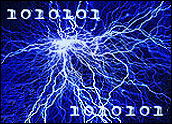
It is is a dream come true for energy seekers: a portable energy source that outperforms the best lithium-ion batteries on the market and produces 10 times the power of lead-acid batteries at half the cost — and without the need for toxic materials or chemicals.
Is the technology being developed by EEStor the future of vehicle power or another undeliverable energy “breakthrough”?
The company has been keeping a low profile since it was founded in 2001 — even its Web site is still under construction — but last week it broke its typical reticence to announce two key production milestones that demonstrate it will be able to roll out the first commercial application of its technology this year.
That application calls for use of EEStor’s electrical energy storage units (EESU) in low-speed electric vehicles produced by Zenn Motors of Toronto.
Mum’s the Word
When contacted by TechNewsWorld about EEStor, CEO and President Richard Weir declined to be interviewed. He wrote in an e-mail:
“The press release is all that EEStor, Inc., wants to talk about at the present time. Thanks for your interest.”
“We are very proud of the key advancements we have made over the past year,” noted Weir in the press release. “In addition to the milestones identified, the company has also been awarded a critical patent related to our technology and has 12 additional patents pending. We have built a state-of-the-art facility and have exceptional personnel on board.”
Better Than Batteries?
Zenn CEO Ian Clifford asserted that EEStor’s energy solution, which is based on ultracapacitor technology, has several advantages over conventional batteries.
“The current battery technology that we use to run vehicles is chemically reactive, which has inherent limitations,” Clifford told TechNewsWorld. “The EEStor devices are solid-state batteries, so they don’t suffer from the same limitations that chemical batteries do.”
Solid-state batteries are lightweight, he said, added that the amount of energy that can be stored in proportion to the device’s size is significantly lower in chemical batteries.
The EEStor system that will be used in the Zenn electric vehicle, for example, will weigh around 100 pounds, Clifford said. A lead-acid system that would produce equivalent performance would weigh 700 to 800 pounds.
Millions of Recharges
Solid-state devices that use ultracapacitors recharge faster, Clifford continued. “Chemical batteries recharge in hours; the EEStor device is designed to recharge in minutes.”
According to EEStor, its EESU is capable of microsecond recharging and millions of charge/discharge cycles.
“An ultracapacitor is an electrostatic device and doesn’t rely on a chemical reaction for its energy storage, therefore it doesn’t become depleted like a battery,” Michael Sund, vice president for communications for Maxwell Technologies, told TechNewsWorld.
“An advanced battery would have a lifetime measured in a thousand or so charge/discharge cycles,” he observed. “An ultracapacitor can be charged/discharged a million times or more without significant degradation of its performance.”
Extreme Temperatures
Ultracapacitors have another advantage over chemical batteries, according to Zenn’s Clifford: They perform better in temperature extremes.
The operating range for EESUs is minus 20 Celsius (minus 4 Fahrenheit) and 65 C (149 F), Clifford noted. “Lithium ion, nickel metal hydride and lead acid batteries [are] all significantly challenged at extreme temperatures,” he maintained. “They have trouble putting out power and retaining power at those temperatures. They’re dramatically compromised at extreme temperatures.”
One of the drawbacks of ultracapacitors is they cannot store as much energy as a battery. EEStor claims that it has solved that problem, although no details are forthcoming from the company.
Safety Issues
From what is known about EEStor’s technology, skeptics have raised concerns about its safety. They say that the material EEStor uses in its ultracapacitors — barium-titanate powders — requires extremely high voltages to operate.
“In order to get high capacitance, you have to go to very high voltage,” Andrew F. Burke, a research engineer at the Institute of Transportation Studies at the University of California at Davis, told TechNewsWorld.
“They’re talking about thousands of volts in a particular device, while for electrochemical capacitors you’re talking about three or four volts,” Burke explained.
“There’s no way you’re going to go to thousands of volts in a vehicle,” he declared. “Would you drive around in your car with 10,000 volts? People are concerned now with two or 300 volts when they talk about hybrid vehicles.”
“The people that come to service an accident now are reluctant to touch hybrids because they know the batteries in these things are two, three, four, 500 volts,” he added. “You go to 10,000 volts, what do you think will happen?”





















































